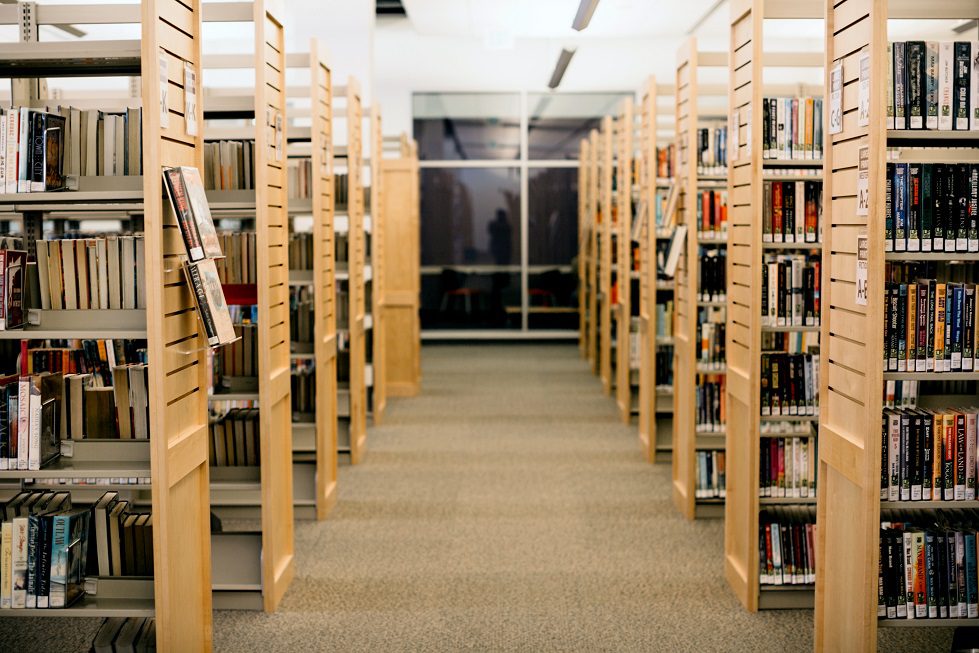 This past weekend I was visiting with an old friend I hadn’t seen in years. The usual topics of conversation came up and I was asked a question I so often get when I tell people I work at the library; Are libraries dying?
This past weekend I was visiting with an old friend I hadn’t seen in years. The usual topics of conversation came up and I was asked a question I so often get when I tell people I work at the library; Are libraries dying?
With the explosion of the internet and the digitization of so many materials, it has brought some to question the necessity of libraries and the roles they play in today’s society. Steve Denning’s article in Forbes, Do We Need Libraries? claims, “Libraries everywhere are under threat. After all, who needs a library today, when it is possible, without even getting out of bed, to find and read almost any book or article that has ever been published?”
In Jon Reiner’s America’s Public Library Crisis he writes, “Walk into a library in any city and you’ll witness a death match between old and new, a clash deeper than the cracks in the Carrara marble. The preservation of the past bolted to the promise of the future has made libraries ground zero of a vanishing world.”
There are plenty of articles and opinion pieces about libraries being obsolete. The prediction of the library’s demise are a real detriment to libraries’ future stake holders. The presidential Budget Proposal FY 2020 is proposing a permanent elimination of the Institute of Museum and Library Services (IMLS). Such a proposition threatens to end all federal funding of public libraries. This purports a serious budget crisis for libraries nationwide.
If libraries are to survive it’s time to look into what’s really going on. Are they simply ruins gathering dust in the wind or are they a cultural epicenter bridging the past and future? I looked to the American Library Association for some answers.
According to the Public Libraries in the United States Survey published in December 2014:
- There were 1.5 billion in-person visits to public libraries across the U.S. This was a 10-year increase of 20.7 percent
- More than 92.6 million people attended the 4 million programs at public libraries…a 10-year increase of 54.4 percent.
- Over 2.2 billion materials were circulated in public libraries…a 10-year increase of 28 percent.
- There were 271,146 public access computers in public libraries, representing a 1-year increase of 3.7 percent
These statistics prove just the opposite of the widely spread rumors pertaining to the death of libraries. With the increase in circulation and in-person visits alongside increased program attendees and computer access it seems as though libraries are reaching out to and succeeding in meeting people’s needs.
The library isn’t an outsider to the changing times but rather an active participant. Laramie County Library’s vision is to “Provide opportunities that empower everyone to reach their full potential.” It’s our duty to evolve with the people, to break down socioeconomic barriers and to advance personal and community initiative.
The 2015 State of America’s Libraries Report from the American Library Association shows the following:
- Digital literacy continues to grow as an important library service. Research shows that families are increasing their access to digital media, but they lack the knowledge to use it effectively in a way that enables learning.
- Makerspaces are trending and provide evidence that libraries are continuing to evolve beyond the traditional focus on collections.
- Academic, public and school libraries are experiencing a shift in how they are perceived by their communities and society. No longer just places for books, libraries of all types are viewed as anchors, centers for academic life and research and cherished spaces.
- From offering free technology workshops, small business centers and 24/7 virtual access to e-Books and digital materials, libraries are transforming communities, schools and campuses.
The internet does provide instant access to an endless array of information and provides means to communication that is revolutionary in its ideal. However, “the online world doesn’t employ professionals to guide people through the inquiry process and to help them discern fact from fiction” (Stinson). It’s a vast confusing world and we all could use a little help in differentiating what is accurate from what is plain fraudulent. The librarian along with the navigational tools the library offers can aid in preventing the spread of misinformation.
Customs, art, beliefs, and institutions regularly come under attack and libraries are no different. But libraries have an advantage. They adapt to, preserve, and even help to define culture. Libraries stand as a physical and digital realm to exchange cultural ideas. The preservation and accessibility to resources is critical to societal progress.
The all too common question of “Are libraries dying?” can be answered by the acknowledgement that as long as there are human aspirations then libraries will remain not only relevant but arguably an indispensable groundwork for human achievement.
~Deanna C.
Works Cited
“ALA Library Fact Sheet” American Library Association, http://www.ala.org/tools/libfactsheets/alalibraryfactsheet06
Dennings, Steve. Do We Need Libraries?
“Public Libraries in the United States Survey” Institute of Museum and Library Services, https://www.imls.gov/sites/default/files/publications/documents/plsfy2014.pdf
Reiner, John. America’s Public Library Crisis
Stinson, Brenda. Skelly’s Wrong on Library Relevance
